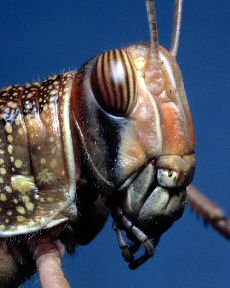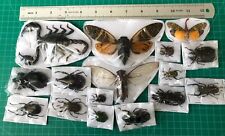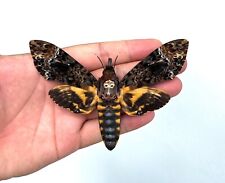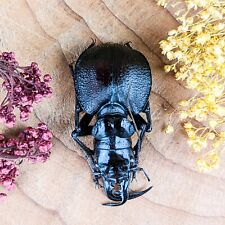
The tree of life may need to be redrawn, say researchers from Rockefeller University and the University of Tokyo who have joined forces to reveal that insects have adopted a strategy to detect odors that is radically different from those of other organisms – an unexpected and controversial finding.
Researchers had always assumed that all vertebrates and invertebrates smell odors by using a complicated biological apparatus much like a Rube Goldberg device. When molecules wafting in the air travel up the insect’s nose, they latch onto a large protein (called a G-protein coupled odorant receptor) on the surface of the cell and set off a chain of similarly elaborate steps to open a molecular gate nearby, signaling the brain that an odor is present.
The gate, a doughnut-shaped protein called an ion channel, provides a safe pathway for ions to flow into a cell. When molecules bind to the odor-sensitive ion channel, the protein changes its shape much like a gate or door changes its conformation as it is opened and closed. Opened, it allows millions of ions to surge into the cell. Closed, it prohibits the activity of the ions from sending a signal to the brain that an odor is present.
At the University of Tokyo, Vosshall’s colleague Kazushige Touhara puffed molecules onto cells engineered to make insect olfactory receptors. They then measured how long it took for the ion channel to open and recorded their electrical movement as they surged inside the cell via the channel. The rush of electrical activity occurred too fast for a series of steps to be involved, says Vosshall. In addition, poisoning several proteins involved in the G-protein pathway didn’t affect the ions or the ion channel, suggesting that G-protein signaling isn’t primarily involved in insect smell.
“The most consistent interpretation is that these are ion channels directly gated by odors,” says Vosshall, whose findings were reported in Nature. “But the dominant thinking in the field may have reflected an experimental bias that aimed at proving a more elaborate scheme.”
According to Vosshall, the ion channels don’t resemble any known ion channel on Earth. They are composed of two proteins that work in tandem with one another: an olfactory receptor and its coreceptor, Or83b. While the coreceptor is common to every ion channel, the olfactory receptor is unique. Together, they form the olfactory receptor complex. Vosshall and Touhara specifically show that this complex forms nonselective cation channels, meaning that they allow any ion to pass through the gate as long as it has a positive charge.
Touhara and Vosshall developed their ion channel hypothesis in parallel with Vosshall’s work on DEET, a widely used chemical in insecticides that jams the receptor complex. Vosshall showed that DEET jams other proteins that have nothing to do with smell, including several different types of ion channels that play important roles in the human nervous system. What these radically different proteins have in common, though, is that they all specifically inhibit the influx of positively charged ions into the cell. “Now the curious result in the DEET paper showing that this insect repellent blocks insect olfactory receptors and unrelated ion channels makes sense,” says Vosshall. “I am optimistic that we can come up with blockers specific for this very strange family of insect olfactory ion channels.”
Related:
Insects The Likely Winners From Warming Climate
Savoring The Flavoring
Synthetic Snot Enhances Artificial Nose


















Comments are closed.